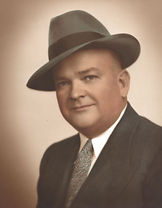Princess Theatre
120 West Main Street, Urbana, Illinois 61801
Opened Monday 25 January 1915
Renamed the Cinema Theatre in 1967
Closed Thursday 10 November 1994
Gus Freeman began work in August 1914 to convert two of the three ground floor storefronts into the Princess Theatre at an estimated cost of $10,000. The First State Trust & Savings bank and Quirk’s cigar and billiard room were the last tenants of the storefronts. The new theatre was variously described as "one of the prettiest photo-play houses in Illinois," palatial, and magnificent.
The front of the Princess Theatre was decorated with white enameled brick and columns. The entrance was in the center, with small storefronts on either side. The large steel canopy covering the front of the theatre had not arrived in time for the opening, so was installed later. The name of the theatre was inlaid in the mosaic tile of the lobby floor near the entrance and can still be seen today.
The 41’x96’ auditorium would seat 600 people very comfortably as the chairs were quite roomy and the rows were placed thirty-two inches apart. The ceiling was old ivory, the wall panels were a light apple green with a tiffany-glazed border. The chairs, carpet, and portieres were in matching colors. There were six exits from the auditorium. A thirty-six inch exhaust fan provided ventilation. A new type of screen, that was still rare in the United States, called a day and night screen, was installed that allowed movies to be projected in more brightly lit rooms.
The Princess Theatre opened the afternoon of Monday, January 25, 1915, with a program that began with a two-reel comedy-drama, My Lady High and Mighty, starring the popular actress Mary Fuller. It was followed by another comedy-drama, On Dangerous Ground, then a double-exposure picture entitled The Useless One. Cupid in a Hospital closed the show. Beckwith's orchestra furnished the music. The shows changed daily.
Alger Brothers
The Princess was extensively remodeled in 1934 by new owners, the Alger Brothers. They spent $12,000 on the remodeling that changed the style of the building from Italianate to Art Deco. Some of the Italianate windows can be seen from the alley to the east of the building. A new facade of buff enameled brick and black chevrons was installed covering the front windows of the opera house. The same familiar metal Art Deco style marquee we still see today was installed. It was always painted in black and white and highlighted with pink neon tubing. The name Princess was in the center, flanked by horizontal lines of neon. Over the years, only the names on the marquee have been changed.
The same familiar metal Art Deco style marquee we still see today was installed. It was always painted in black and white and highlighted with pink neon tubing. The name Princess was in the center, flanked by horizontal lines of neon. Over the years, only the names on the marquee have been changed.
The interior changes included adding two rest rooms and a spacious lounge. The seating capacity was increased by 150 to 700 accomplished by the elimination of one of the aisles and the removal of the stage. When the theatre reopened the feature was Fog Over Frisco starring Bette Davis.

Harold Alger managed the Brothers’ local theatres (Park, Albro, and Co-Ed) from offices in the Princess building. E. E. Alger managed the company's other theatres from their main office in LaSalle, Illinois.

Kerasotes
Kerasotes Theaters came to Urbana-Champaign in October 1958 with their purchase of some Alger owned theatres, including the Princess. In 1967 Kerasotes gave the Princess Theatre a new name: the Cinema Theatre.
In 1985 George Kerasotes Corporation converted the adjoining storefront (formerly McClellan Electric) into a second auditorium seating 230 people. The old auditorium was given cosmetic changes including a suspended ceiling and a decorative acoustical material on the walls. The 1930s wall lights were retained. The lobby was made much more spacious by the removal of the tiny storefronts. An entrance to the new auditorium was created, and some of the space was used for an office and new, lobby-level, restrooms.
GKC closed the Cinema Theatres on Thursday, 10 November 1994. The last films shown were Ed Wood at 8:00 and Red Rock West at 8:15.
In 1995 Norman and Carolyn Baxley bought the building and remodeled the second auditorium back into a storefront first housing Reuben’s Chocolates and then Mirabelle Fine Pastries. The theatre lobby was redone as a coffee shop called the Cinema Caffe. The coffee shop later closed and Carolyn Baxley now runs an art gallery, Cinema Gallery, in the space. The auditorium space was turned into open offices with an entrance off Goose Alley. The old opera house space which had been largely unused during the Kerasotes years was cleaned, painted, and HVAC ductwork for the theatre below was removed. It was left as a huge open room and used first as a martial arts studio and now as a dance studio.